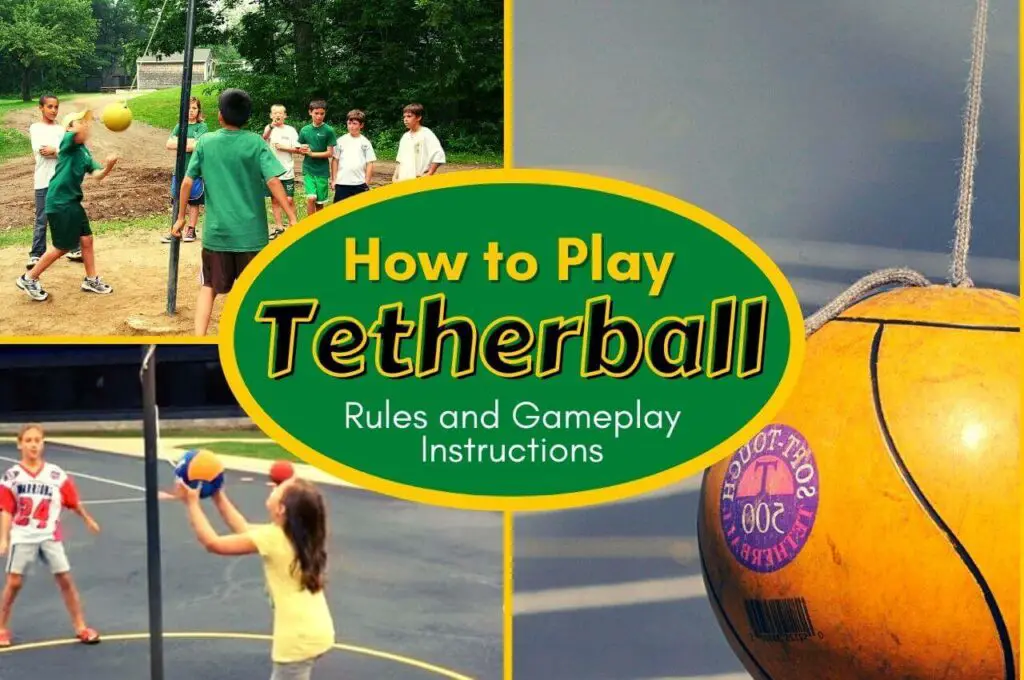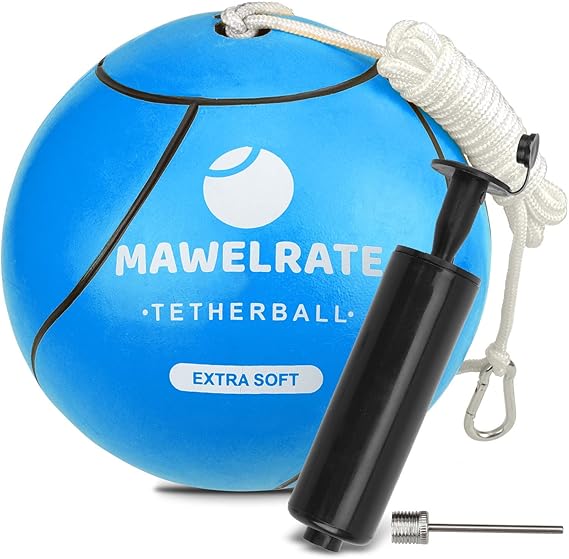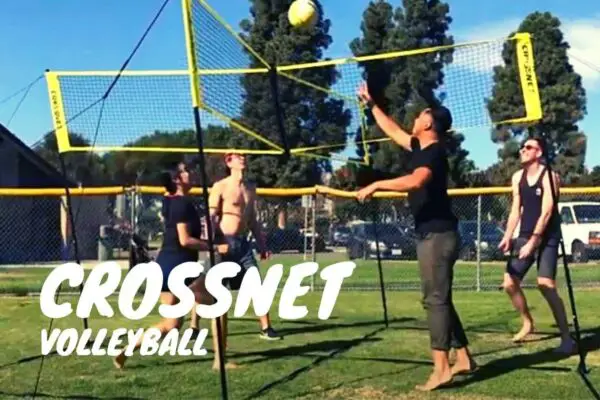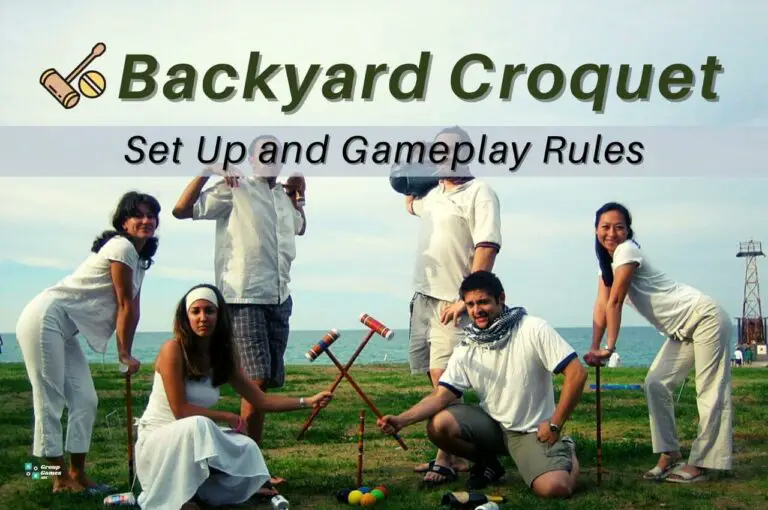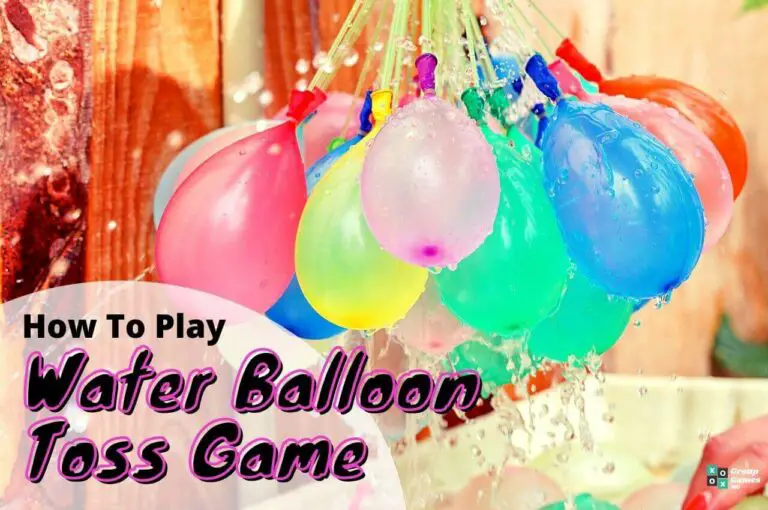Who said outdoor games need big groups of people, large spaces, or lots of equipment? We are here to introduce you to Tetherball, an outdoor game that will prove all of the above wrong.
Tetherball is a fast-paced, fun outdoor activity-turned-game that is played with a single ball, a string and a pole. Quite like Ladder Ball, the main Tetherball rule is to wrap the string attached to the ball, completely around the pole. It’s a fun game that is loved as a leisure sport, an intense workout, or just an activity to pass time.
Can’t wait to know more about the game? Let’s hop straight into the details and gameplay instructions.
What is Tetherball?
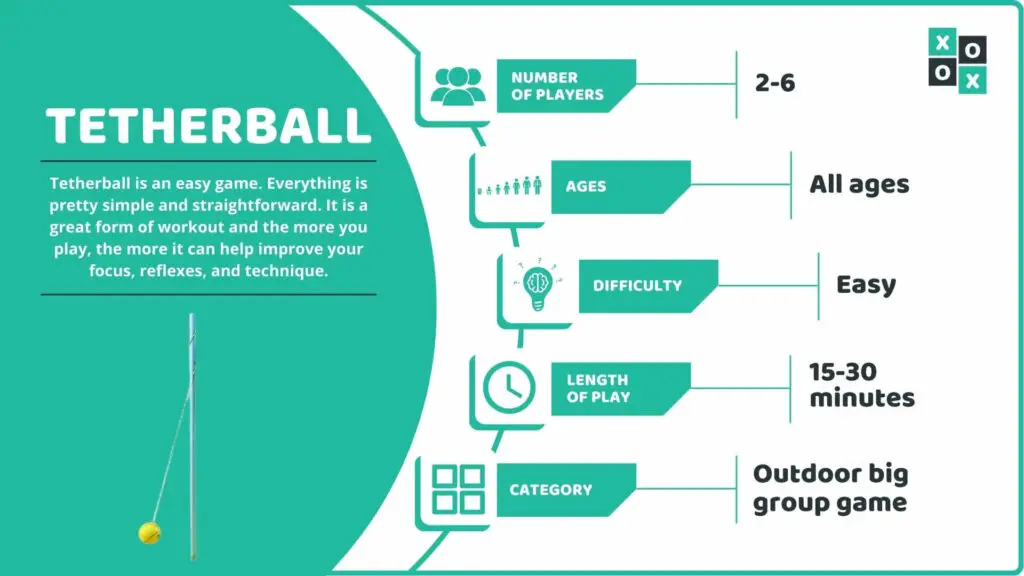
Tetherball is an outdoor game played with minimal equipment, players, and time. The game is a competitive blend of timing and technique and has possibly the easiest set of rules among outdoor games. In Tetherball, two players or teams compete to wind a swinging ball completely around the pole.
Number Of Players: 2-6
Ages: Enjoyable for all ages.
Difficulty: Easy
Length Of Play: 15-30 mins depending on the number of players.
Main Objective: Strike the ball in a way that it passes through the opponent and winds itself around the pole.
Why We Love It: Tetherball is an easy game. Everything is pretty simple and straightforward. It is a great form of workout and the more you play, the more it can help improve your focus, reflexes, and technique.
Brief Overview Of The History Of Tetherball
Tetherball has been a popular outdoor game for at least a century. It is known to have been a kids favorite and an important part of the school playgrounds, gyms, and backyards, back in the early 1900s.
One of its primitive variants was discussed in the 1909 book, Games for the Playground, by Jessie H. Bancroft’s. In pop culture, the game was popularized by the 2004 movie Napoleon Dynamite.
Tetherball Equipment and Setup
Generally, Tetherball equipment is placed in playgrounds, around gyms, or related leisure open spaces and you really don’t need to set things up. However, if that’s not the case, here are the specifications of what you will need:
- A stable pole 7-10 feet long with a stand.
- A tetherball ball and rope set. Note that a regular ball could serve the purpose but tying a rope around would be difficult and so will be striking it with technique.
- Last but not the least, enough space to play.
If you plan to set up the game from scratch, this complete set by Franklin has all you need. You not only get the Tetherball and attached rope but also an easily erectable steel pole and stopper to tie the rope above.
If you already have an area to play and just need a rope and ball replacement, you should opt for this set by Mawelrate. It’s durable, reasonable, and the ball is extra soft so it’s ideal for kids.
Setting Up Tetherball
Just like the equipment, it is fairly easy to set-up the game of Tetherball. You can follow these simple steps before you begin the game:
- If there isn’t a dedicated Tetherball play area, erect a pole of the right size, with an adequate area around it to play.
- Tie one end of a tether firmly to a ball and the other end to the stopper on the top of the pole.
- Mark the courts using chalk by drawing lines on either side of the pole along its diameter.
- Using a colorful tape or the same chalk, mark the height goal (generally at 5 feet). This marks the point below which the rope should not be wrapped. It can be higher or lower than 5 feet according to the age group that is playing.
- Toss to decide which player serves first. The player receiving the serve gets to decide the direction (clockwise or anticlockwise) of the serve.

Tetherball Rules, Techniques, and Instructions
Both the players take a position in their respective courts before a third person takes the ball and drops it from a distance in a way that the ball hits the pole and moves in a certain direction. The server can now strike the ball as soon as it reaches the court.
The gameplay remains the same when played in groups of 2 or more players. Players of one team can take turns when one of them gets disqualified or loses to an opponent.
Serving and Returning The Serve
The server holds the ball in one hand and strikes from the other. The most important Tetherball rule that applies not only to the service but to the entire game is that both players strike in opposite directions.
If player A serves clockwise then the player B will return the serve anticlockwise and this pattern will remain constant throughout. The ball will continue to swing between the two players until one of them manages to strike in such a way that it passes through the other and the rope winds itself around the pole.
The play continues in this manner with players trying to hit the ball once every time it swings to their court, in the opposite direction. The rope keeps winding and unwinding in the process.
2 Key Factors to Know The Differences Between
It is easy to get confused between Tetherball rules because of the fast pace. But you need to remember to not make silly mistakes that can lead to penalties. Know the differences between these two key factors is important;
- A ‘strike’ and a ‘carry’
A strike is simply hitting the ball while a ‘carry’ is when you curve your hand and hold the ball, intentionally or unintentionally, to gain an edge in giving direction and momentum to the ball. You are not allowed to carry the ball.
- Juggling and hitting more than once
Juggling is when you strike a ball and it hits the pole and comes back to you. In this case, you can strike right back. However, you are not allowed to hit more than once in any other instance.
Violations and Penalties
Besides the above-discussed rules, there are more cases that are strictly considered violations in Tetherball, these include:
- Touching the rope in any part of the game. Only and only the ball should be touched by the hand.
- Touching the pole.
- Stepping into the opponent’s court.
- Bending over to hit the ball swinging in the opponent’s court (in some variations).
In case of any of the above rule violations, the opponent gets to serve and a penalty is given to the violator. This penalty can include one or all of the following:
- Unwrapping the rope to the position before the penalty.
- Giving the opponent an extra wrap around the pole.
- Being disqualified for that round.
Winning The Game
The player who is able to strike the ball in a way where the rope winds itself all the way around the pole and the ball hits the pole, wins the game.
One rule that is important here is that of the head goal. If the ball hits the pole after completely wrapping below the head goal, the wrap is not considered tight enough and the round is replayed.
Frequently Asked Questions About Tetherball
What type of hand strikes are allowed in Tetherball?
All types of hand strikes — fist, open hand, or swing — are allowed in tetherball. You only have to make sure that you don’t carry the ball even for a millisecond when striking a swing.
What is Beach Tetherball?
Beach Tetherball is a popular house variation, especially among younger players and kids. This variation allows hitting the ball with any part of the body including head, chest, and feet.
How does a player get disqualified in Tetherball?
When a player gets three penalties in a round, he/she gets disqualified. According to the house variation, these penalties can be consecutive or not.
Alternatives To Outdoor Games Like Tetherball
Nothing can beat a warm sunny afternoon filled with exciting outdoor games. If you’re looking for something that can fill up your itinerary after Tetherball, we might have some options for you.
If the striking technique in Tetherball has particularly appealed to you, you should try games like Cornhole and Molkky. They will give you a fresh twist and will require great technique in throwing the object towards the target.
If you’re a fan of the ball and court games, have about 4 people, and are feeling competitive, you should try Pickleball or Spec Tennis.
Need more options? Check out our outdoor games page for more inspiration.

